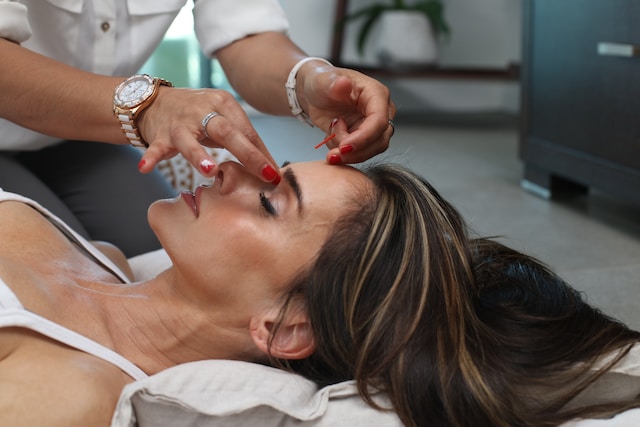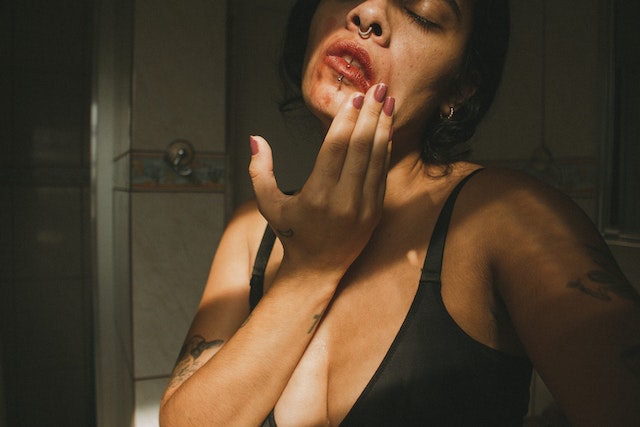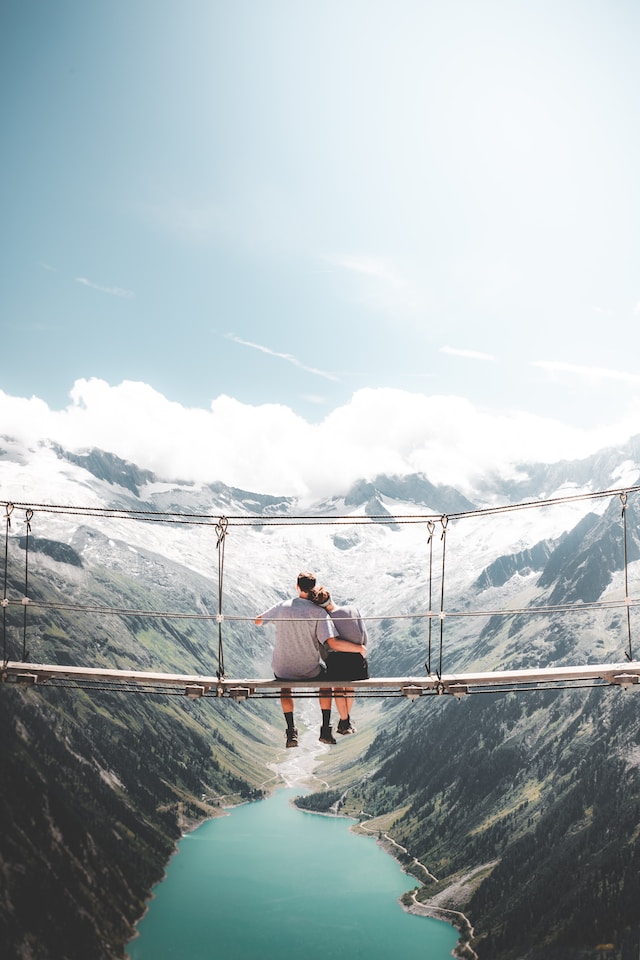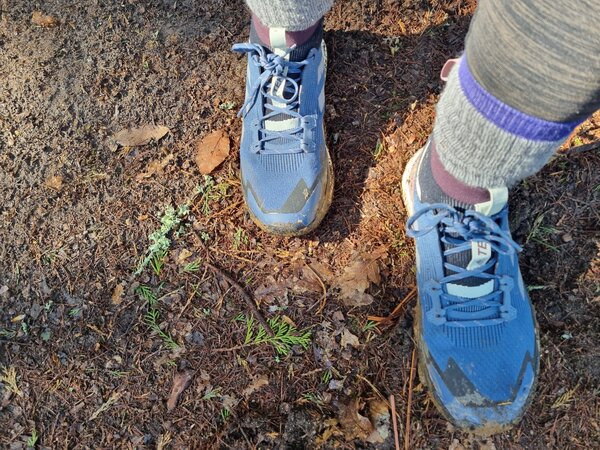

I recently walked 54 miles of the South Downs Way in two days (Amberley to Eastbourne). I’ve experienced blisters first-hand. It’s painful. I am a regular trail runner and a regular walker. I don’t do that much mileage, but I go out every day. I thought my shoes could handle it. Evidently not. If I want to avoid having my feet in shambles, I have to learn how to prevent blisters on long hikes.
Blisters, are the most frequent hiking injury. They are not serious but they can be uncomfortable and infected. Three main factors are responsible for blisters:
- Friction
- Moisture
- Heat
All of these can occur when you walk for a long time. It only takes one to create a blister. If you combine all three, there’s no hope for you!
After my painful experience on my previous long hike, it is important that I don’t suffer from blisters again. There are things that you can do to prevent blisters. While some people are more prone to them than others, you can also take steps to avoid them. Here are 10 of my best tips for preventing blisters while hiking long distances.
1. Choose the Right Footwear
If you want to avoid blisters while hiking long distances, you must wear the correct footwear. You have a variety of options when it comes to choosing hiking footwear. Most of the time, this is a matter of personal choice. If you are walking on mixed terrain, hiking shoes will be a good choice. They’re a little more durable than running trainers but not as heavy-duty as hiking boots. Hiking boots are best for multi-day hiking trips as they offer better ankle support and are more durable. They also tend to be better suited to rough terrain. It’s important to remember that they are heavier, and as you rack up the miles, it will become more difficult to walk. If you want to save money and get a shoe that can be used for both running and hiking, then trail running trainers are a great option.
You should definitely visit a shop to try on a variety of different outdoor shoes. It’s still worth trying them on, even if you’re not going to buy them right away, since you’ll probably find them cheaper elsewhere. If you want to prevent blisters, there are a few things you should consider when purchasing hiking footwear:
- Grip– If you don’t like the idea of slipping, then look for hiking boot with deep rubber lugs at the bottom. You will have better traction when walking on mud, rocks and wet surfaces.
- Protection– Hiking boots need to protect the feet while you are walking, inside and out. You can choose to wear waterproof shoes or not. Both have their benefits. I will explain this more in detail shortly. If you are hiking on rocky terrain, look for padding in the blister-prone areas and on your toes.
- Support Low-cut shoes will not provide as much support as boots with a high or mid-top. It all comes down to terrain, because unstable ground puts more pressure on your ankles.
You should also consider your foot size, if you have had any previous injuries, your weight and the size of the backpack you will be carrying. These factors will affect the type of shoes you wear. The best hiking shoes are those that you feel comfortable in. There is no shoe that fits everyone. Try on as many brands and types as possible until you find your perfect pair. You are looking for the Cinderella moment, when the shoe fits perfectly. She’s also a great role model, since I’m fairly certain Cinderella never had blisters.
2. Check to Make Sure You Have the Right Shoe Size
It’s not so important what type of hiking shoes you choose, but that they fit properly. It’s also a good idea to visit a store to try on different hiking shoes before you buy them. Most people know their shoe size, but for hiking shoes, walking boot, etc. you will need to go up a size. This is because when you walk long distances, your feet will get hotter and expand. You need to allow for this in the shoe. We also need to make sure that the shoes are not too large, as this can cause blisters.
You can test if a pair is too large by walking up and then down a small incline or ramp. You’ll notice that your heels will slide towards the back when you go up and your toes will hit the front when you go down if the boots are too large. This is not good. You want to be completely still.
If you notice that a pair is too small, you will have a hard time putting them on. They will feel uncomfortable, as if you want to take them off and your toes may feel squeezed. You need enough space to be able wiggle your toes, but not too much that they are flapping all over.
You can ask for advice at the store, since certain brands will work better with wider feet or different pronation. You can also buy insoles for your shoes to add extra support if you are between sizes.

3. Tie your laces correctly
Blisters can be caused by rubbing the skin repeatedly. This can occur for many reasons. Your shoelaces may not be properly tied. The laces of your hiking boots can cause friction to the skin if they are not tied correctly or incorrectly.
To prevent blisters while walking over long distances, you should lace your shoes tightly. The entire length of the laces should be tied, not just the top. It will support your foot and keep it in place so there is less movement inside the shoe. Also, keep in mind that your laces may become looser as you hike. Check them regularly and retie if necessary to make sure they fit as intended.
4. Socks make all the Difference
The socks you wear are just as important as your hiking shoes. The socks you wear inside your shoes are just as important.
If you choose the wrong socks, you will end up with blisters. It’s important to choose socks made with hiking in the mind. What to look for includes:
- Material Cotton is comfortable, but it holds moisture and is not breathable. Avoid if you do not want blisters. Look for socks made of moisture-wicking fabrics, such as Merino Wool.
- Thickness– This is dependent on the season and weather. Thick socks keep your feet warm and cushion them better. However, if the weather is hot, your feet may sweat more. When the weather is warm, thinner socks are a great option. However, they will not cushion your feet as well and may cause rubbing.
- Size– You need the right size to wear comfortable socks when hiking. Try on socks before buying them just as you would shoes. Make sure that they are snug and do not create wrinkles as this could cause friction while you walk. Consider whether you will be walking through long grass. In this case, a longer sock would help protect your legs.
- Liner socks– This is a thin sock you can wear under another pair of hiking sock to create a second layer between your foot and boot. These socks are especially good for those who suffer from blisters.
- Toe Socks– Despite looking a little strange, toe socks offer the advantage of keeping toes apart and reducing the chance of skin irritation between toes.
5. Break Your Shoes in
It’s important to break in new shoes before going on long trips. It takes time for new shoes to mould to your foot shape and soften. Hard leather hiking boots are especially problematic if they haven’t been broken in.
Wear them around your house when you first receive them to get used the the feeling of them. Start wearing them around the house, in the garden or when walking the dog, to the shop, etc. to get used to their feel. If you notice areas that may chafe, don’t dismiss them out of hand. They might just need some time to soften. It’s better to do this now than halfway through a hike of 25 miles!
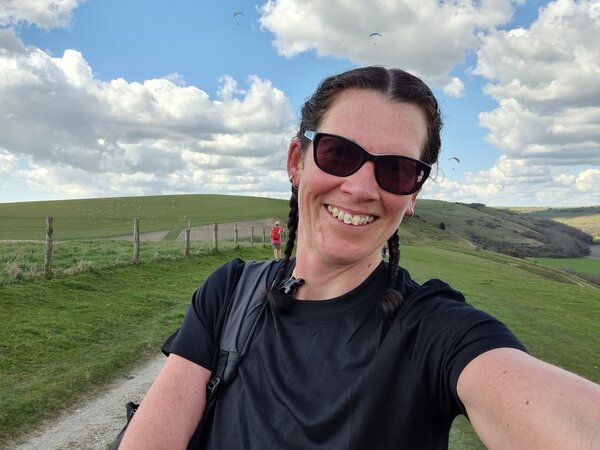
6. Remove Debris
You’ll likely be walking over a variety of terrains, and these can slowly start to get into your shoes. No matter how tightly you tie your laces, sand and other small particles, such as grass, grit or pebbles can easily find their way into your shoes. When they do, it can be very uncomfortable to walk. You should always remove your shoes if you feel anything inside. The friction caused by these annoying pieces of debris can lead to blisters.
It is worth checking out hiking shoes with a sock-like collar that helps keep out debris.
7. Blister Tape
What if you still have blisters on your feet from the last time you walked? Seriously, I haven’t shed any skin since my last walk three weeks ago! I want to go for another walk but I have blister hotspots that are still healing. The skin is also very delicate. I worry that if I put on hiking shoes, I will reopen the old wounds.
It’s not always possible to have perfect hiking feet. It is believed that our feet will become tougher over time, but for now it’s important to protect them as best you can. Use a blister prevention tape like kinesiology or zinc oxide tape. This tape forms a barrier to prevent further abrasion between the sore area and your socks. This tape is stronger than blister plasters and standard plasters. It stays in place, and protects from dirt and moisture.
Even if you don’t have a blister on your foot, but know which areas of your feet are prone to blisters in the past (heels and toes, as well as your arches) you should tape them up before you go. You should also carry some of this tape with you in your first-aid kit. If you feel a blister forming, you can apply some tape to the affected area. This should allow you to continue your hike without further injury.
8. Keep your feet dry
Excess moisture can cause blisters if it is trapped in the shoe. It can be caused by your foot sweating, or water from puddles and streams. This is either from your foot sweating or if water from puddles, streams etc. has found its way into the shoe. Moisture softens the skin over time and, when combined with walking’s rubbing motion, can cause it to start to tear or break.
To reduce the chance of moisture being trapped and causing blisters, dust your feet before you put on your hiking socks. Keep a spare pair in your day bag so you can switch them out if moisture is a concern.
Many people swear by waterproof boots, or Gore-Tex shoes. However, be aware that while they stop water from entering, they also keep moisture out. When your feet sweat, as they will no doubt, there is nowhere for the moisture to escape. I think it is better to choose a boot or shoe with a mesh upper. They may get wet in the rain, but they dry much faster and allow your feet to breath. If your feet get wet, stop, use a light travel towel or cloth to dry them and then change socks.
9. Let your feet breathe
You don’t want to stop too often on your walk because you want to reach your destination in daylight. But if your feet start to feel hot and tingly, you should stop to let them breathe. Sit down and remove your socks and shoes. Let the fresh air flow over them. It feels great, doesn’t if?
This will help to cool down your feet and remove moisture, both of which can cause blisters. It may take you longer to walk, but it will be worth it if you can avoid blisters.
Try the “chimney” effect if you can’t stand to stop because your muscles will seize up, or you worry that you won’t be able to walk again. The “chimney effect” involves rolling your socks over your boots to create a chimney that allows heat and moisture to escape.
10. After Care
Some people are more prone to blisters and even if you take the above precautions, they may still occur. If you cannot prevent blisters while hiking long distances, the next best option is to know how to treat them once you get them.
Unpopped blisters heal faster because the fluid in a blister protects your skin as it heals. It is best to let them heal on their own within 3-7 days. However, if you don’t plan to walk barefoot for the rest of the week, it can be difficult to keep them from popping. Some people think it’s best to let blisters dry out by letting the air reach them. You don’t really want them to get dry, as the fluid is what helps them heal. You can use a blister plaster to cover them when you have to wear shoes. These blisters are more cushioned than normal blisters, and they should keep the blister intact.
It’s vital to clean up your blisters if they have already burst. Then, wipe off any blood or dried fluid with a wet towel. Cover the area with a sterile bandage after thoroughly drying. It may take a while for the skin to grow back, depending on the size of the blister and its severity. Take precautions before going on a long walk before the blisters have fully healed.
Final thoughts…
As I said at the start of this article my feet are still recovering from a hike I took 3 weeks ago. I have a planned 25-mile walk this weekend, followed by a 3-day trek in Italy. I should be using all the blister prevention that I can. What have I learned?
First, I am changing my footwear. In place of the clumpy shoes I wore along the South Downs Way that didn’t allow me the tighten the laces I wanted and caused my feet to move too much in them, I will be trying these TERREX Hiker 2 walking shoes from adidas. As a member of the adidas Blogger Community, I have been given the opportunity to test out their products. These shoes could not come at a more perfect time!
Touch wood, they haven’t caused me any problems yet. My ankles are supported by the stretchy neck and this also keeps everything tight to my skin. They are super lightweight and the laces can easily be tightened up. I have taped up my heel and the area between my toes where I am most likely to get blisters. I also packed an extra pair of socks. I hope that changing just these two things will prevent any more blisters. We shall see.
The biggest lesson I learned is that some things are trial and error. It’s not until you get blisters that we start to worry. By then, it’s usually too late. We learn from our painful experience, and we can prevent this from happening in the future. Let’s hope for many more adventures without blisters!
